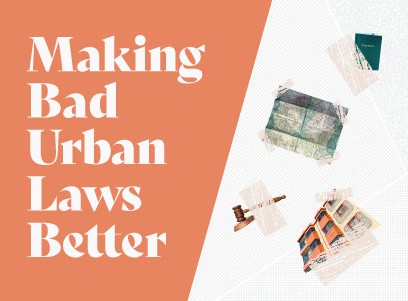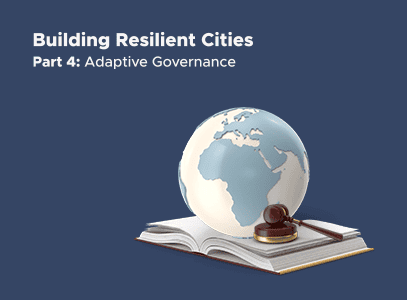2022. There is a global renaissance in building big, continent-spanning infrastructure. Leading the cement pour is the Chinese Belt and Road Initiative (BRI). BRI is a vast network of transport, energy, and manufacturing investment across Eurasia (Asia, Europe, Central Asia and the Middle East) and Africa. BRI was launched in 2013 and is forecast to cost between $1 and $8 trillion. The Chinese are serious about the BRI; they have changed their constitution. The pursuit of BRI in China now has the same status as the pursuit of life, liberty, and happiness in the US.
This is the Great (financial) Well of China.
In June 2021 the G7 group of rich countries responded by launching the Build Back Better (B3) World initiative to construct infrastructure in low-income countries. The G7 looked vague when asked ‘show us the money.’
This is the Great Wobble against China.
Applying deep thinking to these phenomena, near an overworked coffee machine in Washington D.C., is our eclectically visionary big tent of researchers, lawyers, economists, and international development practitioners at the Charter Cities Institute. We have a simple idea, inspired by (but distinct from) Nobel Prize wielding Paul Romer. Romer became the leading global advocate of charter cities with a 2009 TED Talk. CCI declare:
“City developers should be given ownership or a long-term lease (a charter) over the land on which a new city will be constructed. This will give the developers an incentive to build a well-planned city offering good rules that protect investors. Attracting migrant workers and investors will raise the value of the land and so reward those city developers, with some of these revenues being remitted to the host country government who then also benefits. Incentives are aligned for city success.”
This is the Great Wheeze of Charter.
(A brief aside:
Dear Reader,
I hope you are enjoying the blog so far. Forgive my interruption, I felt both an apology and an explanation were needed here.
Oscar Wilde said of England (in 1887) that ‘we have really everything in common with America nowadays, except, of course, language.’ Since joining CCI from England (in 2021), I have realised just how true this still is. I quote from a colleague ‘MATT…SO HELP ME GOD…START AMERICANIZING YOUR SPELLING’. I apologise, sorry apologize, and promise I will do better in future.
I have also discovered as a consequence of raised eyebrows and puzzled countenances among my esteemed CCI colleagues that ‘wheeze’ is understood in the US as only being related to a respiratory condition. In the UK ‘wheeze’ can also mean a ‘clever scheme’. It is in this regard that I use it here. My colleague (he of the divine appeal just noted) argued when editing a draft of this blog with furrowed brow that ‘a US audience isn’t gonna get this’. I disagree and defer to the cosmopolitan openness of my American cousins and to my certainty that they will enjoy learning a little English-ism over breakfast.
Apologies for taking your time, and on with the blog.)
Romer focused on new city building. CCI’s model has even more contemporary relevance. Our vision neatly encompasses the global big infrastructure renaissance. Let us delve back into time to explain how…
In 1854, the French engineer Ferdinand Lesseps regaled the Pasha (ruler) of Egypt with the vision that a canal in Egypt, by connecting Europe and Asia would place Egypt at the center of the world. The awed Pasha gave Lesseps a 99-year concession (i.e., a charter) to build and run the canal and control the adjacent land. In 1903 the US signed the Hay-Banau-Varilla treaty with Panama, granting the US sovereignty over the proposed Panama Canal and a 10-mile zone on either side (a charters again).
Both canals had charters.
Did CCI’s claims about incentives work in practice?
The charters worked.
The Suez and Panama Canals were engineering triumphs.
The Suez Canal Company promised 5 million tons of shipping would traverse the 195km canal every year. By the mid-1950s 122 million tons were doing so annually. Although only 40 miles in length, the Panama Canal had to deal with steep mountains and cross the river Chagras, a river more temperamental than an Oscar ceremony that could rise fourteen feet during a single tropical storm. The positive impact of the Panama Canal on the US economy was still visible in patterns of US urbanization up to the year 2000.
This was the Great Wealth of Canals.
Hold off on the balloons and cheering for a moment. There are also some historical warnings.
The most controversial aspect of Romer’s 2009 TED Talk was his idea of a ‘sovereign guarantor’. Romer suggested that the management of a charter city could be delegated to a developed country to give more credible promises to long-term investors. The notion was criticised by some as “neo-colonial.” Romer replied, charter cities are “voluntary.”
The financing of the Suez Canal was voluntary but created a debt crisis for Egypt that gave Britain an excuse to impose colonial rule over the country by 1882. Signing the Panama Canal treaty was a ‘voluntary’ act by the new government of Panama, but the US utilized its military prowess to obtain a better deal.
The cost and long-gestation of big infrastructure have long been used as a rationale for close government involvement. Does history offer us a very different lesson? The Suez Canal was built by a private company. This Suez lesson lives on. The last decade has seen the emergence of Private City Operators (PCOs) who plan and build new cities. China Fortune Land Development Company, for example, was founded in 1998 and now manages an estimated 125 new cities. PCOs have proved successful in raising enormous sums. Elsewhere, the private South African development Waterfall City is scheduled to cost $5.8 billion.
This easy conclusion is misplaced. Real estate is an inherently vulnerable business as it involves massive up-front costs in a sector that is notoriously vulnerable to economic fluctuations. The Suez Canal opened in 1870 and in that year only 40,000 tons of shipping traversed the canal. The company’s share price collapsed. The initial attempt to build the Panama Canal by Lesseps ran into corporate bankruptcy in 1889. The second construction attempt by the US government was delayed six-years (ecological challenges) and ran 2.6 times over budget. A study of 258 contemporary global infrastructure projects found that 90% of them went over budget, many by more than 50%. The $3.5 billion Kilamba City project in Angola had to be rescued by the Angolan government through a rent-subsidy scheme to make the city affordable and save it from turning into a ghost-town. These are the Great Warnings of Canals.
CCI’s model of charter cities incorporates these lessons. We reject the guarantor country approach. We believe that when it comes to big infrastructure construction, the host government should be brought in as a key partner from the beginning. In this vein, CCI recommends a public-private partnership (PPP) between a local real estate developer and the host country. Instead of looking for vast, China-matching sums of money to invest in infrastructure the Build Back Better (B3) World initiative would be better tasked to learn these lessons. B3W should focus on getting the rules and incentives right to promote private investment in new infrastructure.
We can learn from the Suez and Panama Canals. Chartered infrastructure works.
Let us build infrastructure great again.







